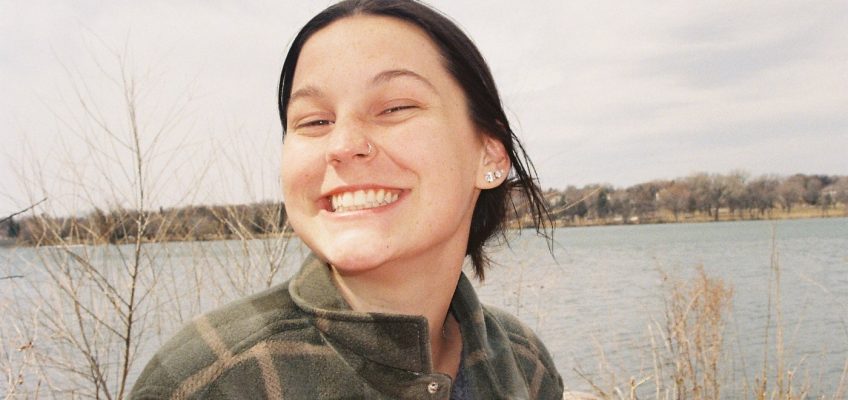Lucy Getschow knew if she didn’t get help soon, she would end up dead.
Drugs and alcohol had taken over her life. She had quit soccer. Stopped trying in school. She realized she was at her breaking point. Lucy felt terrified to vocalize her struggle, because there was no one there to push her forward. She had to face it all alone.
Lucy grew up in South Minneapolis. She started using marijuana at 11 and then moved on to alcohol and opiates, which quickly became an addiction. She felt isolated in her experiences. At the age of 16, she opened up to her sister about her struggles. Lucy was then enrolled into Hazelden Betty Ford Foundation’s inpatient program. It wasn’t until she met the other girls in the program that she found connection and community.
Many youth have experiences similar to Lucy’s.
8.15% of Minnesota teens use drugs and 10.87% of them drink alcohol, according to the National Center for Drug Abuse Statistics (NCDAS).
Ken Winters, a researcher of adolescent health and cannabis use at the University of Minnesota, says there are two main reasons youth are so susceptible to addiction.
Drugs are popular in our culture. Youth follow the norms that they see in their culture and the behavior of the adults around them.
Biology also plays a role in addiction. Young people are more vulnerable to the addictive effects of drugs than adults, and the way the brain is maturing and developing can contribute to it.
“Young people, even though it’s illegal and (they) may not have a lot of money to buy drugs, it’s easier to go down an addiction path than adults,” he said.
The NCDAS reports that over 3% of all 12-17 year olds in Minnesota meet the criteria for illicit drug-use disorder. Because of the amount of youth addiction, there is an overwhelming need for recovery facilities that offer treatment. Inpatient programs are an important part of recovery for many; they provide a place where those with a drug use disorder can stay and receive 24-hour treatment, often for a month.
“The inpatient or residential environment can really be quite important for a young person, because it helps structure the recovery process,” said Winters.
Health professionals, like Winters, say that there is a need for more inpatient facilities available to youth.
“On average, they say only 10%, maybe 15% of young people that need treatment services for a substance-use problem receive it,” said Winters.
Hazelden Betty Ford Foundation helps fill that need in Minnesota. The organization works to supply more opportunities for recovery from substance-use disorders and related mental health conditions. Their youth residential program serves people ages 12-25 at one location in Plymouth.
“Because there are national gaps,” said Emily Piper, chief legal and administrative officer at Hazelden Betty Ford, “people fly their kids in from all over the country to receive treatment and access to health care.”
Lucy was one of the young people who received treatment through this program, and she says it is one of the reasons she is alive today.
“I definitely appreciated the program, but I was really angry at first, and I didn’t want to engage,” said Lucy, “I wasn’t used to being held accountable and being told I was doing something wrong and that I needed to clean up my actions.”
There are many other things that contributed to Lucy’s recovery, including the sober high school she attended and her sister’s support. Today she is two and a half years sober.
Emily Piper, chief legal and administrative officer, in the library at Hazelden Betty Ford in St. Paul. Piper has worked at the foundation for six years. (Pechulano Ngwe Ali)
Hazelden Betty Ford aims to become more accessible to those who cannot access treatment due to cost and coverage barriers through their advocacy work, says Piper. They also engage in education and prevention work in schools and communities in an effort to limit the number of youth who develop addiction.
Parents shape the attitudes and values of their children, says Winters. When parents and communities are educated on these topics they have the ability to support their youth when they are in need.
“(Parents and communities are) an important source of corralling… and bringing favor to pro-healthy and drug-free attitudes,” said Winters.
Youth access to drugs can also be limited by laws and compliance checks, like ensuring drug stores are following drug age regulations, says Winter.
Lucy, now 19, has found a supportive community in her recovery. She is heading into her second year of college at St. Catherine University. She is studying to become a nurse, a profession she chose because of the experiences she has had throughout her recovery.
“I definitely have thought about (how) my life isn’t linear and my recovery isn’t linear, and that’s okay that I’m not like everyone else,” she said.
Additional reporting by Naomi Miller (Richfield High School) and Kamrin Scott (graduate of Two Rivers High School)
About this report
This story was produced as part of ThreeSixty Journalism’s Multimedia Storytelling Institute for high school students in partnership with Blue Cross and Blue Shield of Minnesota, which financially sponsors the camp and supports story sourcing. ThreeSixty Journalism is a multimedia storytelling program for Minnesota youth. Grounded in the principles of journalism and focused on contributing to more accurate narratives and representative newsrooms, ThreeSixty offers technical, ethical, and entrepreneurial training for fulfilling careers in storytelling and civic leadership. It has been housed at the College of Arts and Sciences at the University of St. Thomas since 2001.


Leave a Reply